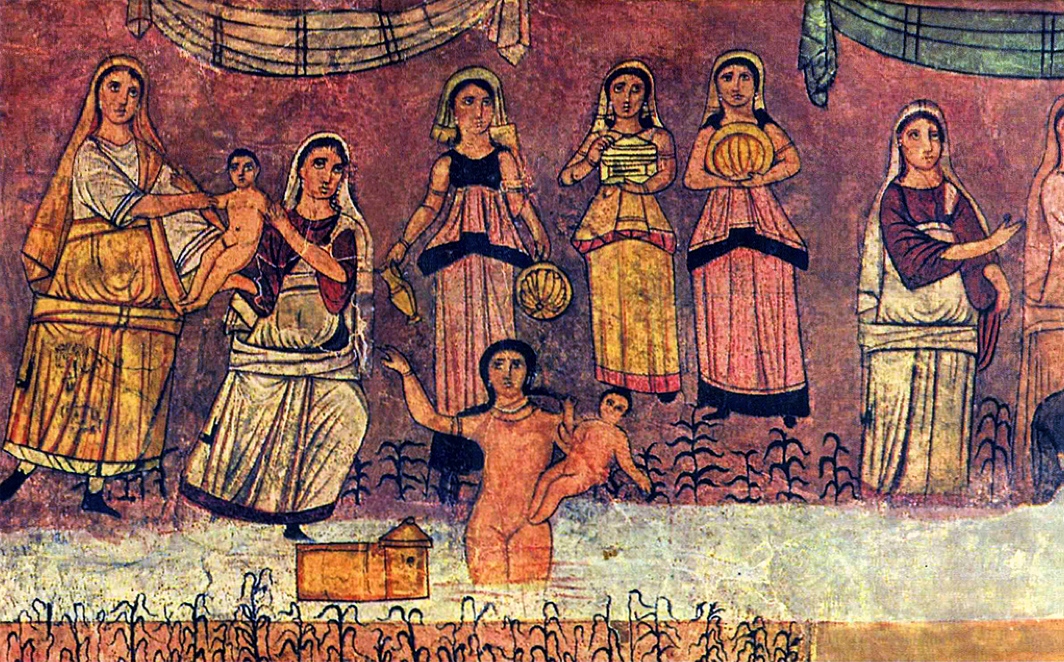Moses Taken from the River

Mid-3rd century
Fresco
The synagogue at Dura Europos, Syria
The narrative flow in this part of the fresco wall moves from the right, where the midwives receive the Pharaoh's command, to the middle, where the baby is discovered by Pharaoh's daughter, and then to the left, where Moses' sister Miriam receives the child and hands it on to her mother Jochebed (Exodus 1:15-2:8).
For students of Christian iconography, Moses' basket is of particular interest. As with many Christian images of Noah's ark it is pictured as a built structure, in this case a sort of rectangular box with a tower on the right. In Genesis, Noah's ark is called in Hebrew a tevah. The only other use of tevah in the Bible is at Exodus 2:3, where it is the word for the Moses' basket. The Mishnah, which is contemporaneous with these frescos, uses this same word for the chest or "ark" where the Torah scrolls are kept (Frankel, s.v. "Ark, Noah's"). Thus with one image the congregant can contemplate the tevahs of Noah and Moses carrying God's people safely on the waters just as the Torah lies snug in its own tevah in this built structure, the holy synagogue.
Behind the Pharaoh's daughter, her attendants wear Greek peploi and hold the symbols that nymphs bring to the birth of a "divine man" in Hellenistic iconography. It is the princess, not they, who takes up the child. The interpretation of the Hebrew Bible then current in Syria and Palestine took the Hebrew verb to mean she "stretched forth her hand" to get the baby (as seen here), not "sent her handmaid," as in modern translations. Similarly, some rabbinic commentaries held that the two midwives charged with killing Hebrew babies were in fact Miriam and Jochebed, so the midwives we see on the right are pictured as the same women as on the left. Some modern scholars have explained the nakedness of Pharaoh's daughteras identifying her with Isis/Venus, but it may be a reference to rabbinic explanations of the time that said that she was going into the water to cleanse herself, whether of leprosy (like Naaman in the Jordan in 2 Kings 5) or of the stain of idolatry (Schreckenberg and Schubert, 178-82).
Read more about images of Moses
Read more about images of Miriam.
Source: this page at Wikimedia Commons.